
Navigating the roads can be a daunting task, especially when faced with the myriad of road signs that populate the highways and byways of the United States.
Many drivers, whether seasoned or new, find themselves puzzled by the diverse array of signs, each with its own unique meaning and purpose. This confusion can transform a straightforward drive into a perplexing challenge.
The Manual on Uniform Traffic Control Devices (MUTCD), published by the Federal Highway Administration (FHWA), is the authoritative guide on road signs.
However, its technical nature often leaves the average driver at a loss. Understanding these signs is not just a matter of compliance; it’s a cornerstone of road safety and informed driving for everyone, from local commuters to international tourists.
In this accessible article, we will demystify the world of US traffic road signs. Our goal is to equip you with essential knowledge about the various types of signs, their meanings, and the regulations that govern them, all without the need for a degree in traffic engineering.
We’ll cover everything from the universally recognized stop signs and speed limits to the less familiar symbols and road markings. By the end of this journey, you’ll have the confidence to interpret and respond to the signals that keep America’s roadways safe and efficient.
So, before you hit the road, let’s explore what road signs are and how they integrate with other elements of road safety to ensure a smooth and secure driving experience.
What Is a Road Sign?
A road sign is a sign erected at the side of or above roads to provide information to road users. They are designed to convey important information quickly and clearly, helping drivers make informed decisions while on the road.
What Is a Traffic Sign?
A traffic sign is a type of road sign that provides specific instructions or information to drivers and pedestrians. These signs include regulatory signs, warning signs, and guide signs, each serving a unique purpose in maintaining road safety and order.
Other Key Road Sign Concepts
What Are Road Markings?
Road markings are lines, patterns, words, or symbols on the road surface that provide guidance and information to drivers and pedestrians. They work in conjunction with road signs to ensure that road users understand the rules and layout of the road, contributing to overall road safety.
What Is a Road Symbol?
A road symbol is a pictorial representation used on road signs to convey information quickly and effectively. These symbols are standardized to ensure that they are easily recognizable and understood by drivers from different regions and backgrounds.
The Importance of Understanding Road and Highway Signs
Understanding road signs is crucial for ensuring safety on the roads. They provide essential information and warnings that help drivers navigate and make informed decisions.
Proper knowledge of road signs reduces the risk of car and motorcycle collisions and other types of dangerous accidents by promoting orderly traffic flow and preventing misunderstandings in various driving situations.
Last but not least, this proficiency will help you adhere to legal regulations and driving rules, avoiding fines and penalties from disobeying them.
What are regulatory road signs?
Regulatory Road Signs
Regulatory road signs are a vital component of the US road sign and traffic law system. These signs, which have a white or red background, display specific laws and regulations that drivers must follow and cover many areas of road safety, including speed limits, parking restrictions, lane usage, and right-of-way rules.
Drivers can be ticketed for violating the regulatory road sign instructions and, depending on the severity, face jail time or stiff fines (i.e., rolling stops or speeding).
Speed Limit Signs
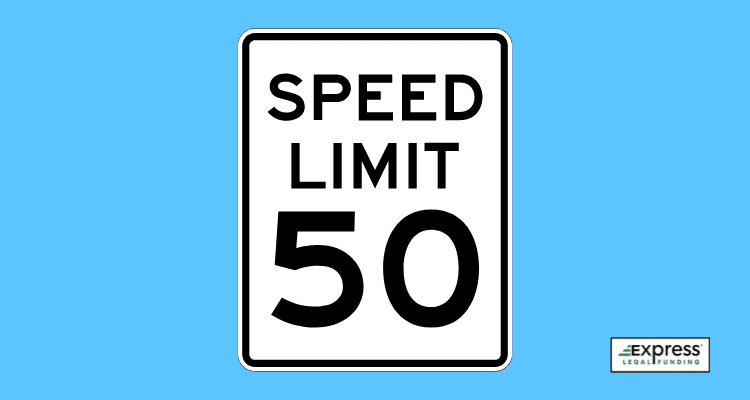
- Indicate the maximum or minimum speed at which vehicles may legally travel.
Stop Sign
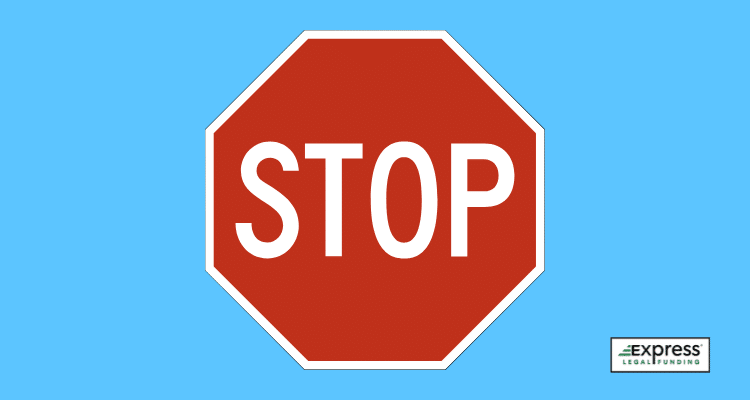
- Stop signs are red are red and require drivers to come to a complete stop at an intersection or junction and often include supplemental plaque signs, such as “4-Way.”
Yield Sign
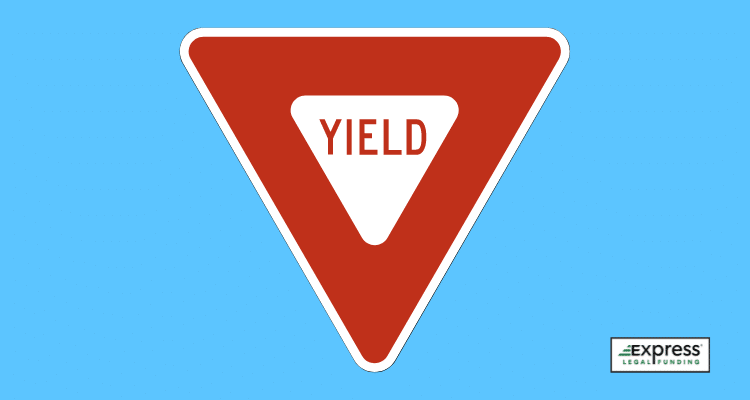
- Instructs drivers to give the right-of-way to other vehicles or pedestrians.
Do Not Enter Sign

- Indicates roads or areas where entry is prohibited for all vehicles.
One-Way Sign

- Indicates streets where traffic moves in only one direction with a left or right-pointing arrow, depending on the street.
No Parking Any Time Sign

- Indicates areas where parking is never allowed.
No U-Turn Sign
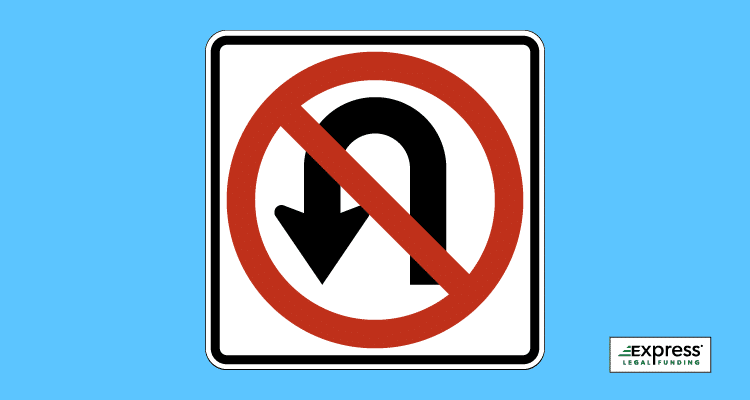
- Prohibits vehicles from making U-turns.
No U or Left-Turn Sign
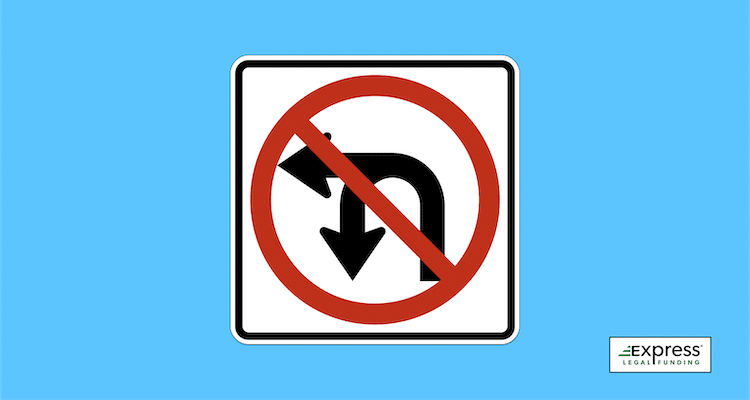
- Used to prohibit drivers from making U-turns or left turns at the indicated location to ensure traffic flow and safety.
Two-Way Left Turn Only Sign
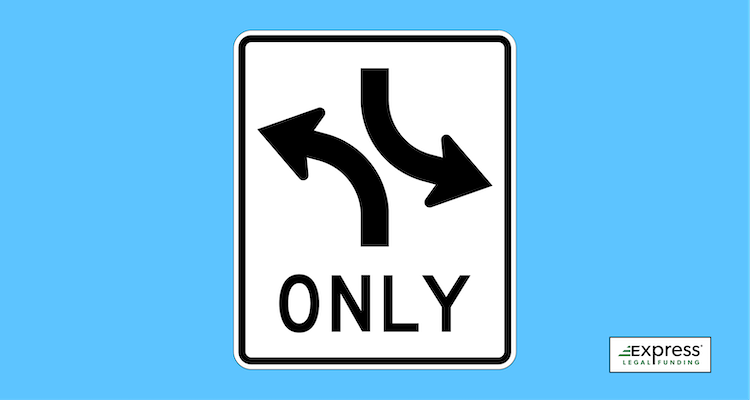
- Indicates a shared center lane that allows vehicles from both directions to make left turns.
Double Left Turn Lane Sign
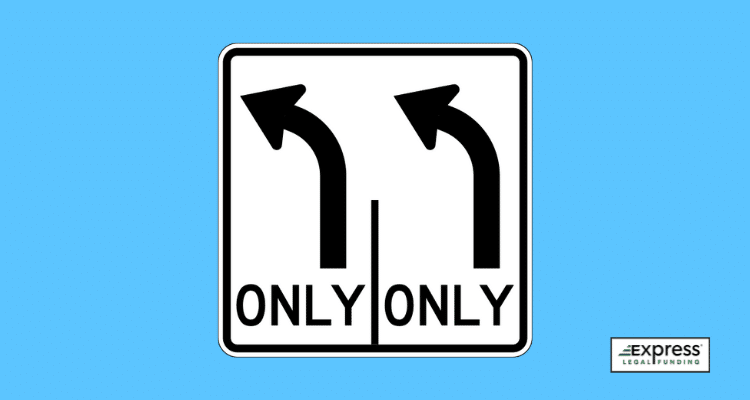
- Signs for double left-turn lanes indicate that the two left-most rows of motor vehicles going in the same direction are allowed to make a left-hand turn simultaneously.
Bike Lane Sign

- Designates the right portion of the roadway exclusively for the use of bicyclists, with motorists heading in the same direction on the left.
HOV 2+ Only Sign
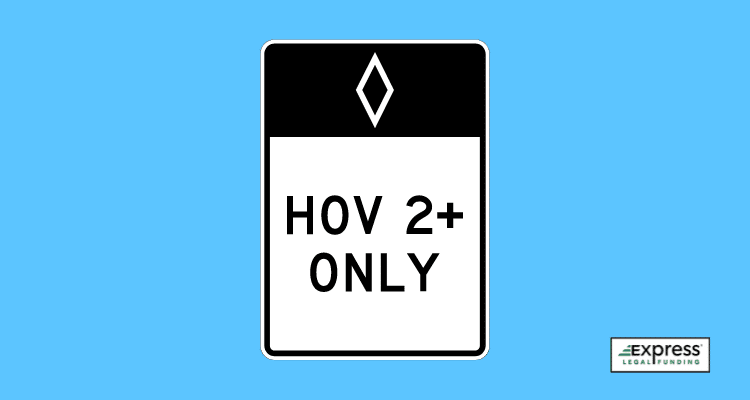
- Indicates that a car must have two or more passengers to qualify to travel in the preferential high occupancy vehicle lane (HOV lanes facilitate faster travel according to the Freeway Management Program).
No Standing Anytime Sign

- Indicates a location where drivers are prohibited from stopping their vehicles at any time in a specified location, even temporarily, except to avoid a collision with other traffic or to comply with the directions of a police officer or road traffic control device.
No Right Turn Sign

- Used to prohibit drivers from making a right turn at an intersection or a specified point on the road.
No Left Turn Sign
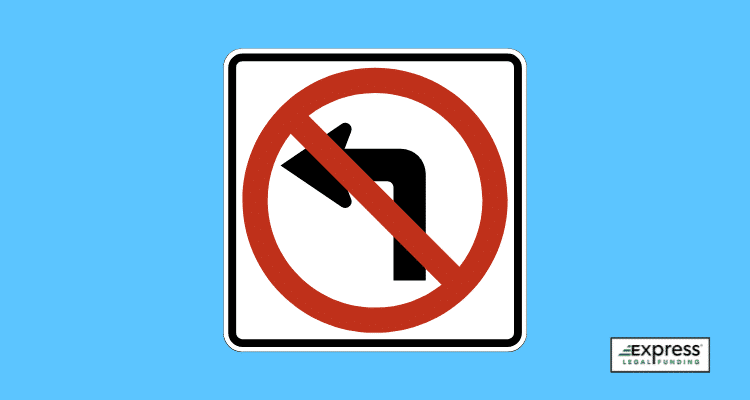
- Used to prohibit drivers from turning left at an intersection or a specified point on the road.
Right Lane Must Turn Right Sign
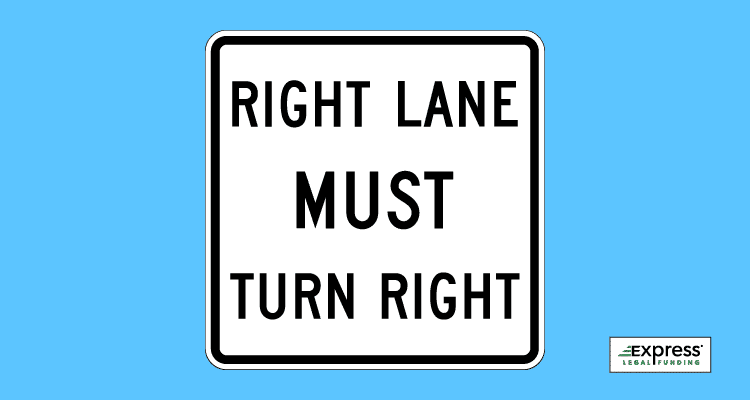
- Instructs drivers that vehicles in the right-hand lane must make a right turn at the upcoming intersection or designated turn point.
Left Lane Must Turn Left Sign
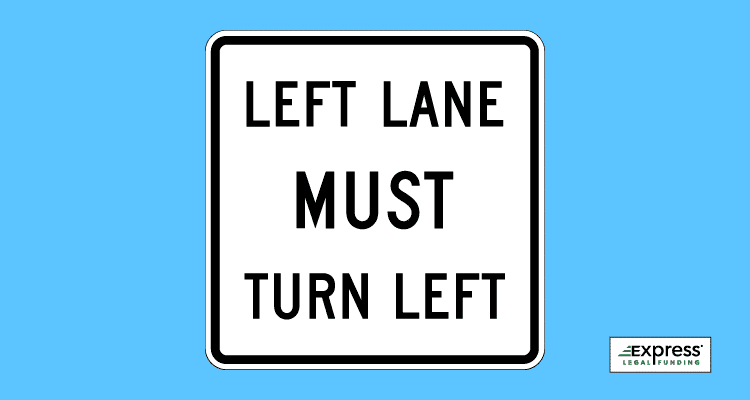
- Instructs drivers that vehicles in the left-hand lane are required to make a left turn at the upcoming intersection or designated turn point.
Weight Limit Signs
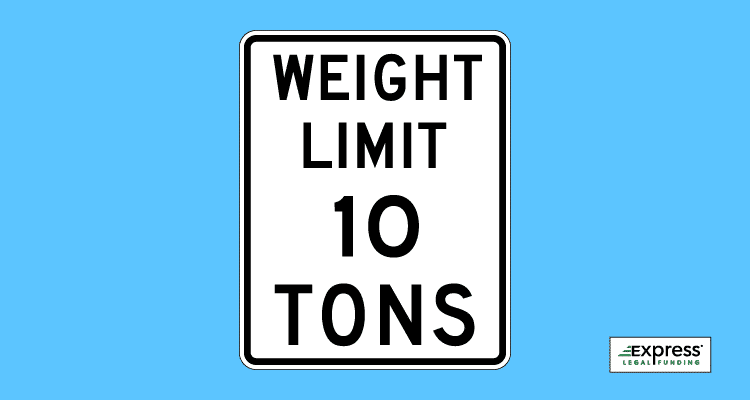
- Indicate the maximum weight of vehicles allowed on certain roads or bridges.
What are warning road signs?
Warning Road Signs
Road warning signs are traffic signs that warn drivers about potential hazards or changes in road conditions ahead, such as curves, intersections, or animal crossings.
What color are road warning signs?
The color of road signs within this category are typically yellow and have a symbol or message indicating the specific danger. They help increase driver caution and prevent accidents to ensure road safety.
Hairpin Curve (Right) Sign
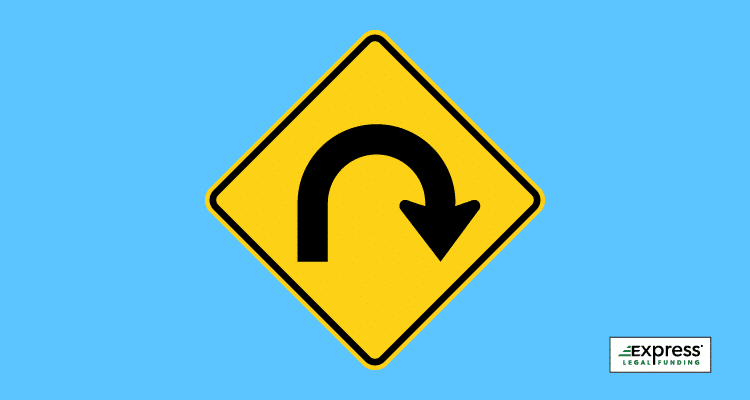
- Indicate that a tight right bend in the road is ahead and to alert drivers to reduce the speed of their motor vehicles and to drive cautiously.
Hairpin Curve (Left) Sign
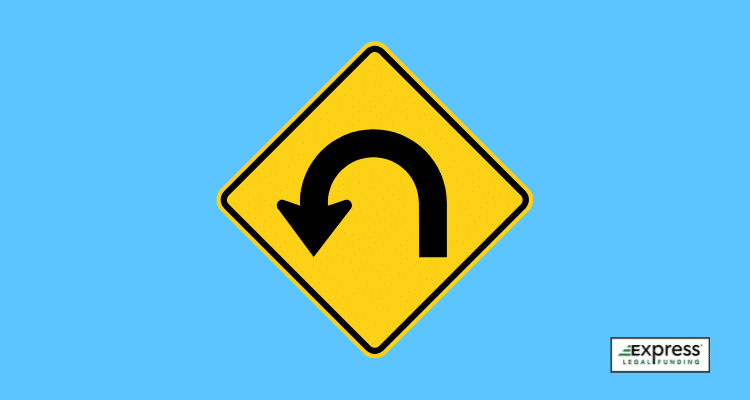
- Indicate that a tight left bend in the road is ahead and to alert drivers to reduce the speed of their motor vehicles and to drive cautiously.
Hill Signs
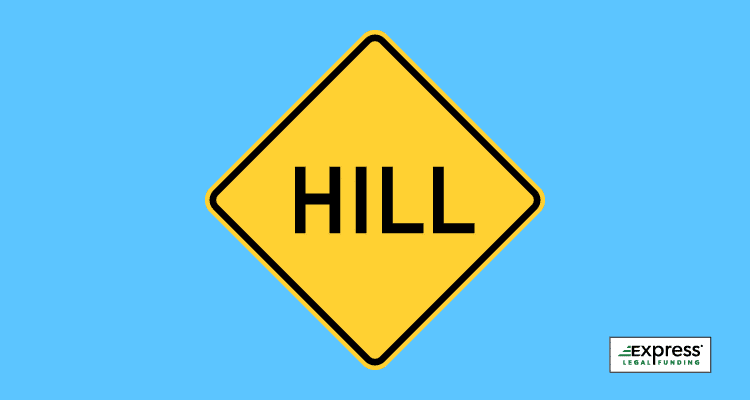
- Warns drivers of a steep incline or decline on the road ahead.
Hill With Grade Sign
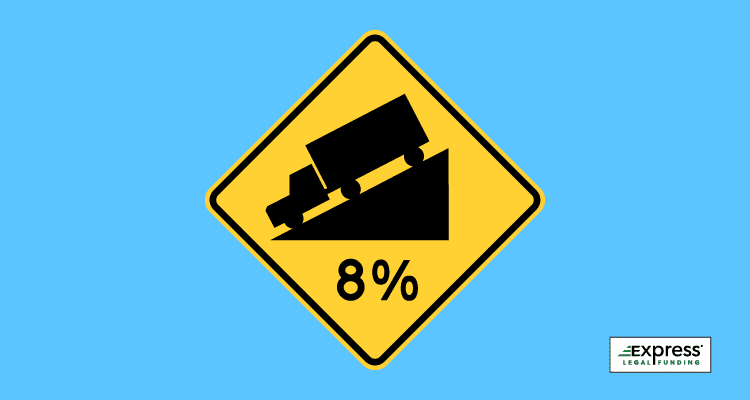
- Warns drivers of a steep incline or decline on the road ahead, including the degree of incline/decline.
No Passing Zone Sign

- Indicate zones where overtaking other vehicles is not allowed.
Low Clearance Warning Sign
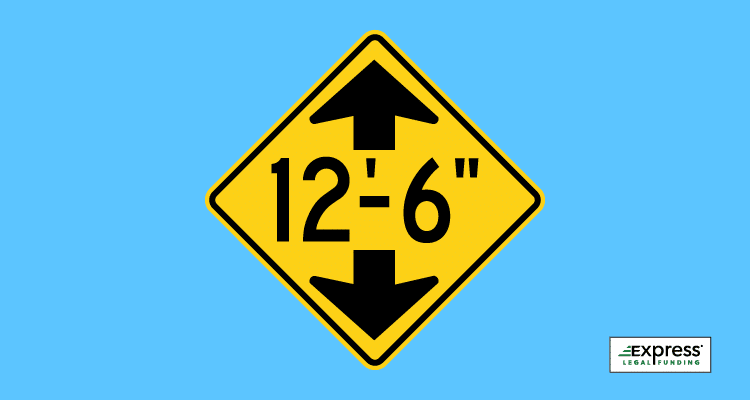
- Indicate the maximum height of vehicles able to pass under bridges or overpasses due to height limits.
Road Narrow Sign
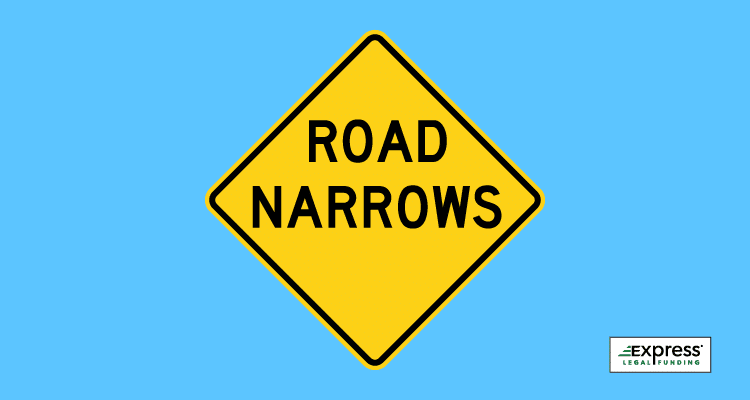
- Warns drivers of the road width restrictions affecting larger vehicles’ ability to navigate on narrow roads.
Dip Sign
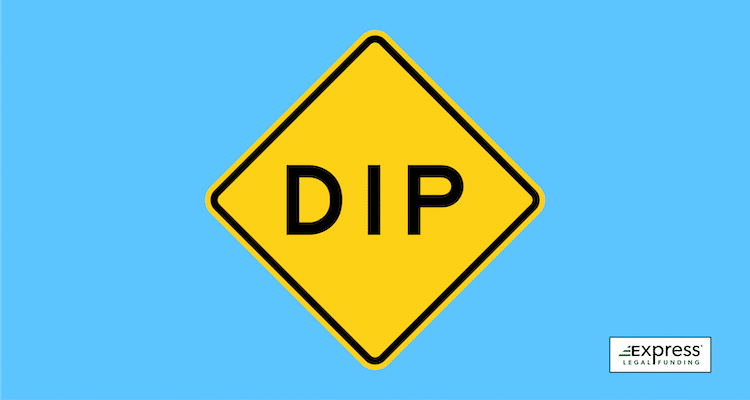
- Indicates to drivers of an upcoming low place in the road and to reduce the speed of their motor vehicle. Dips in the roadway, like potholes, can damage the undercarriage (section underneath the main cabin) of vehicles traveling too fast.
Bump Sign
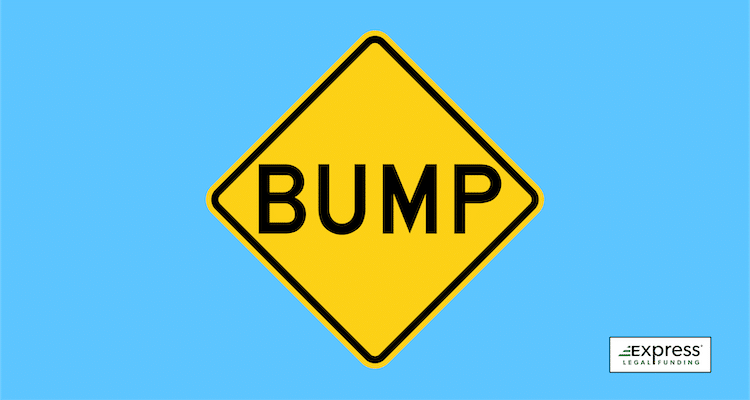
- Indicate an upcoming sharp rise in the road’s shape, suggesting drivers reduce the speed of their motor vehicles to mitigate the impact and subsequent turbulence caused by rolling over the sudden bump.
Deer Crossing Sign
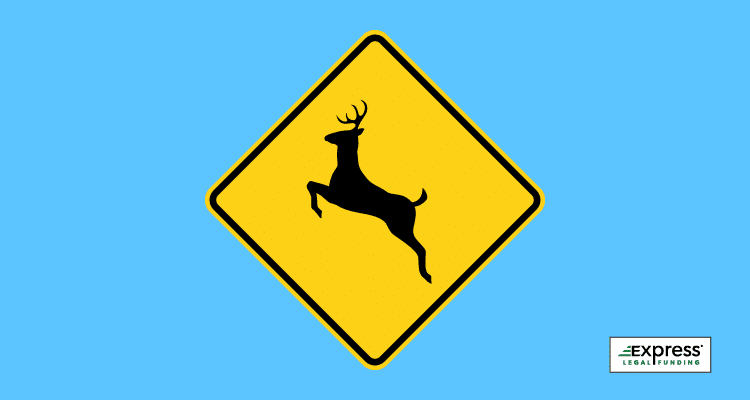
- Alerts drivers that deers may cross the road in the area, prompting caution. Other types of animal crossing road signs: cattle crossing or elk crossing signs.
Slippery When Wet Ahead Road Sign
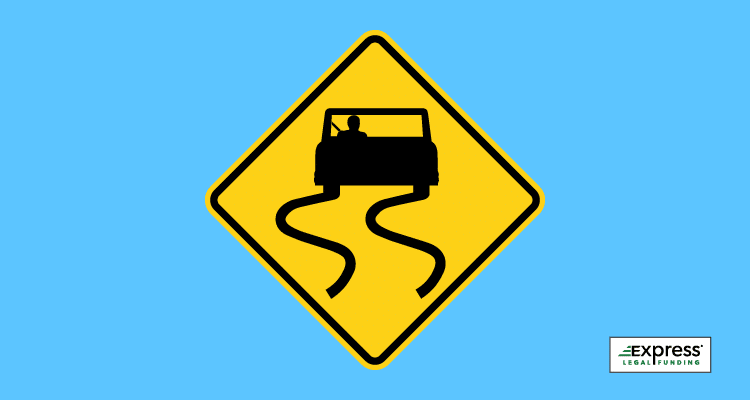
- Warns that the road ahead may be slippery, especially in wet or icy conditions.
Fallen Rocks Sign
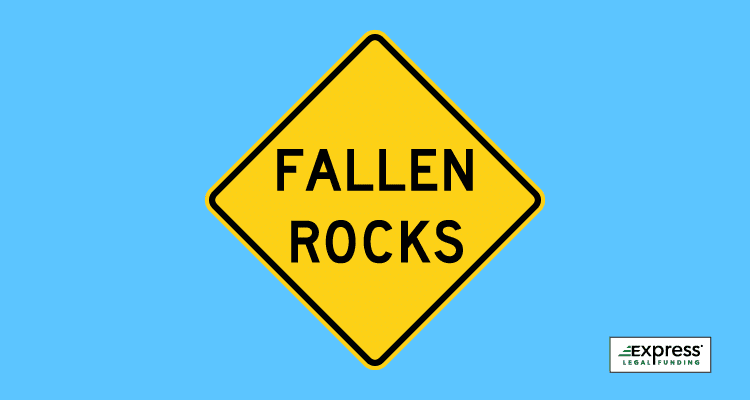
- Alerts drivers to the possibility of rocks falling onto the road from nearby cliffs or hills.
Merging Lanes Signs
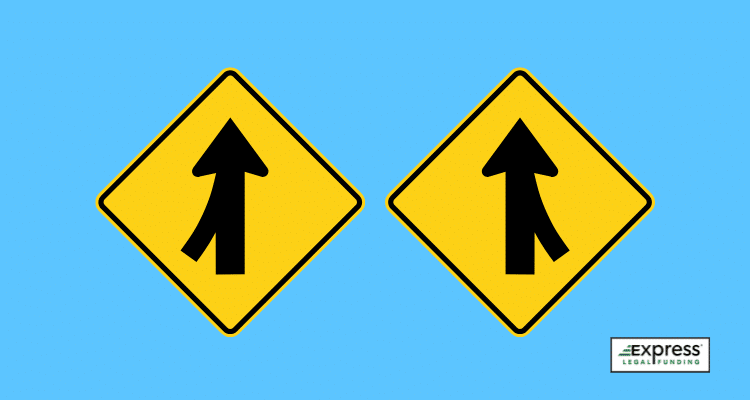
- Warns drivers that two lanes of traffic will combine into one lane ahead, specifying the direction of the merging lane that ends.
Winding Road Sign

- Cautions drivers about a series of curves or turns in the road ahead.
Crossroad Sign

- Warns drivers of an upcoming intersection with another road.
Traffic Lights Ahead Sign
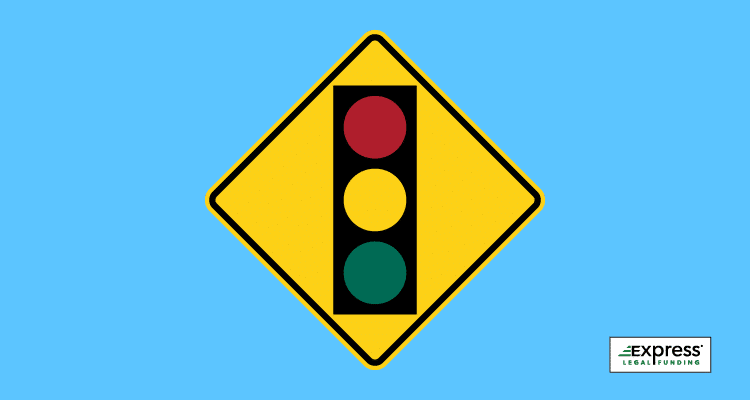
- Alerts drivers to an upcoming intersection controlled by a traffic signal, prompting them to have an increased level of caution and to prepare for the possibility of having to stop if the traffic light is red (or flashing red). These signs are installed where the view of the approaching intersection is blocked and act as a heads-up to motorists.
Emergency Signal Ahead Sign
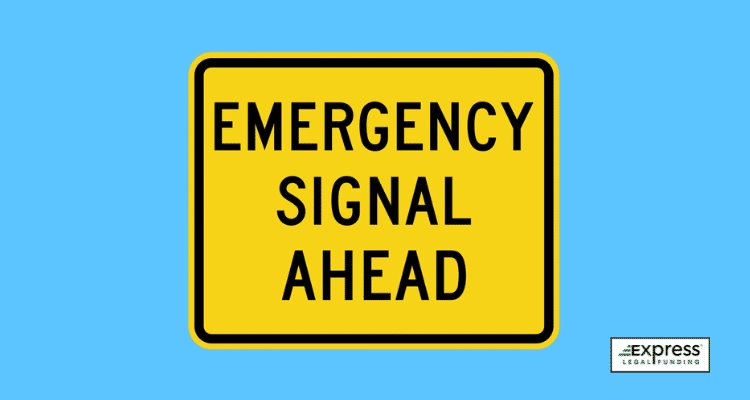
- Indicates to drivers that there is a traffic signal ahead, which may be activated by emergency vehicles, such as fire trucks or ambulances, requiring approaching drivers to stop when activated.
Circular Intersection Ahead Sign
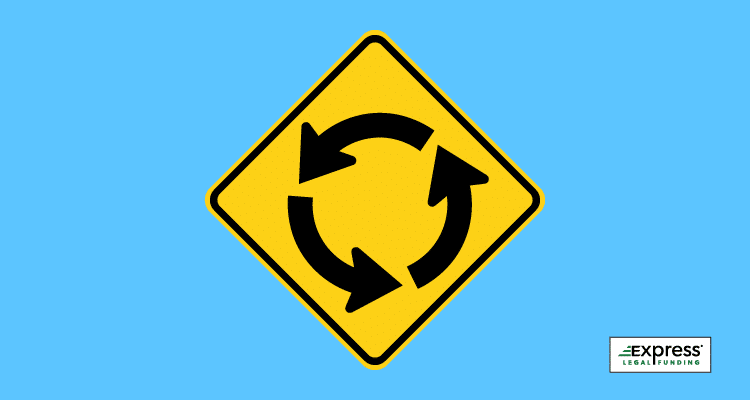
- Warns drivers of an upcoming roundabout or traffic circle, requiring them to yield to traffic already in the circle before entering it.
Yield Ahead Sign

- Alerts drivers to an intersection with a yield sign ahead, where they must give the right of way to other drivers.
Railroad Crossing Sign
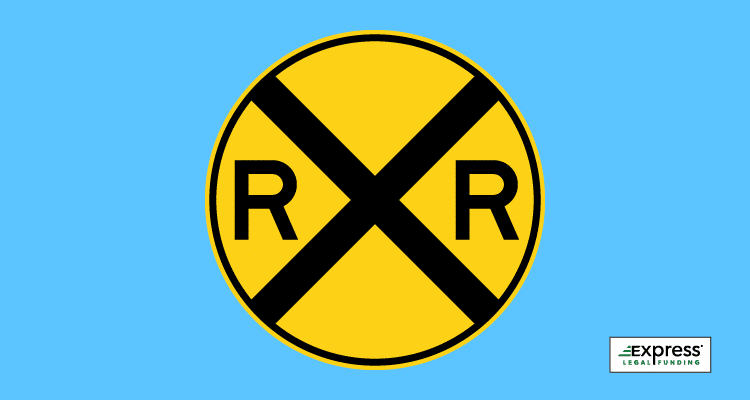
- Warns drivers of an upcoming railroad crossing.
Stop Ahead Sign
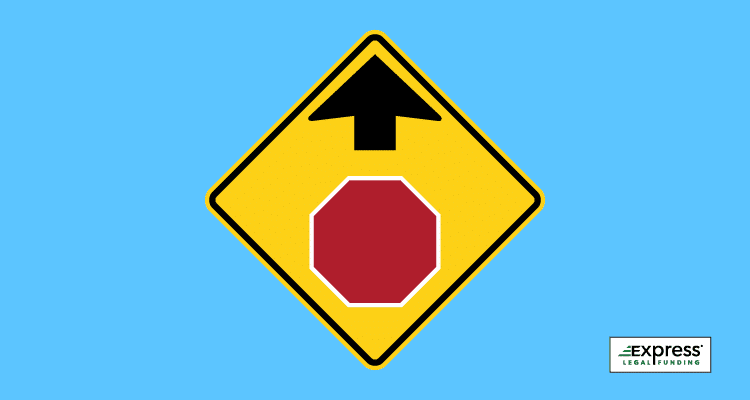
- Indicates that a stop sign intersection is coming up, requiring drivers to stop.
Dead End Sign
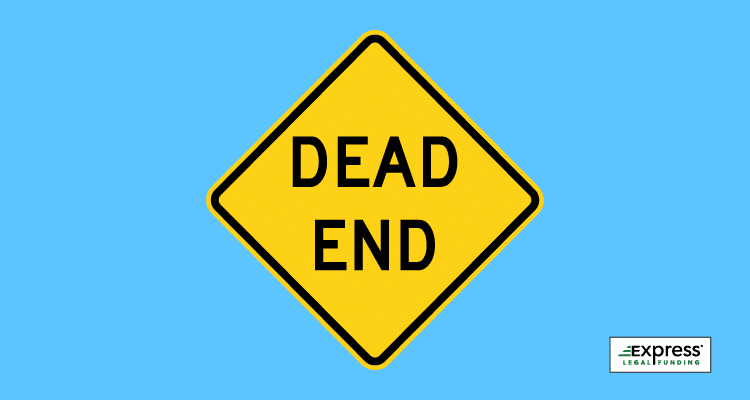
- Warns drivers that a road or path does not continue or connect to another road, indicating that they may need to turn around to reach their desired destinations.
Playground Sign
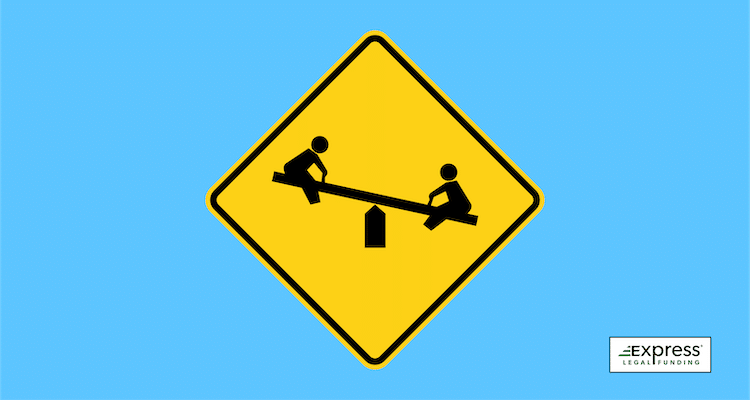
- Installed near playgrounds to alert drivers to slow down and exercise caution because children are likely to be playing nearby.
School Zone Ahead Sign
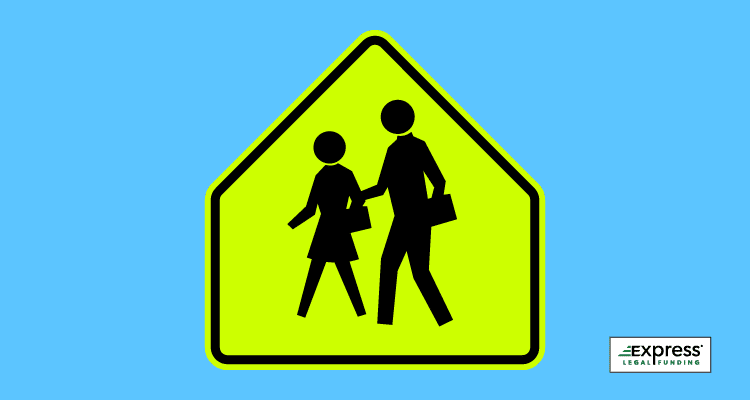
- Inform drivers that there is a school zone ahead and there may be increased child pedestrian activity in the area.
School Bus Stop Ahead Sign
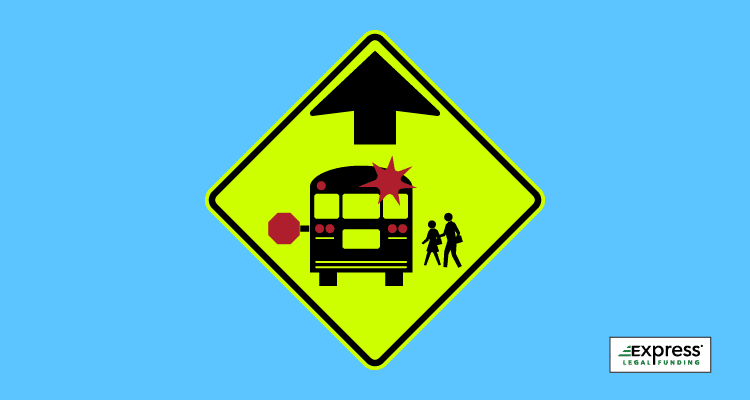
- Indicate to drivers of an upcoming school bus stop in situations where there is inadequate sight distance for approaching traffic to see a stopped bus. This warning sign helps prevent pedestrian car accident injuries to children getting on and off a school bus.
What are guide signs on the road?
Guide Road Signs
Guide road signs provide directional and location information to help drivers navigate to their destinations. These signs have green backgrounds and include details such as route numbers, mileage, and points of interest, ensuring safe and efficient travel.
Destination Distance Sign
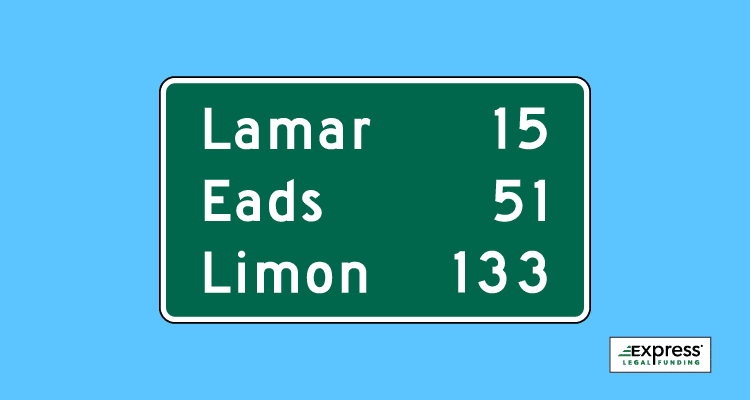
- Indicates the direction and mileage to various destinations like cities, towns, or landmarks for highway routes.
Interstate Route Marker Sign

- A shield-shaped guide sign identifies and guides drivers along numbered interstate highways, ensuring straightforward navigation and route recognition.
Interstate Oasis Sign
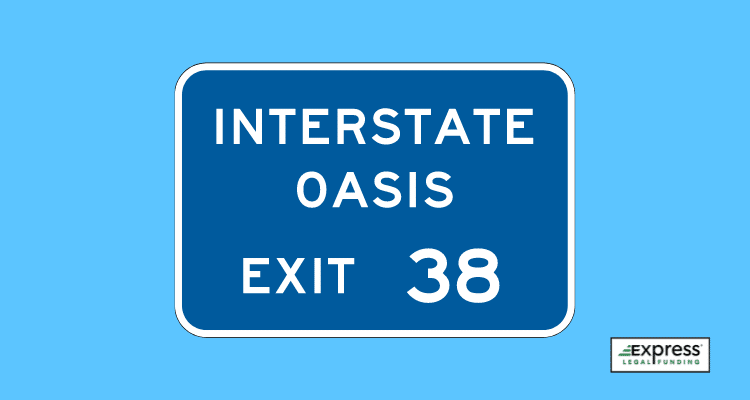
- An interstate oasis highway sign indicates a rest area or service location along interstate routes that provides products and services to the public, such as food and fuel. In order to qualify as an interstate oasis, the location must have 24-hour access to restrooms and parking to accommodate heavy trucks and regular cars.
Hurricane Evacuation Route Sign
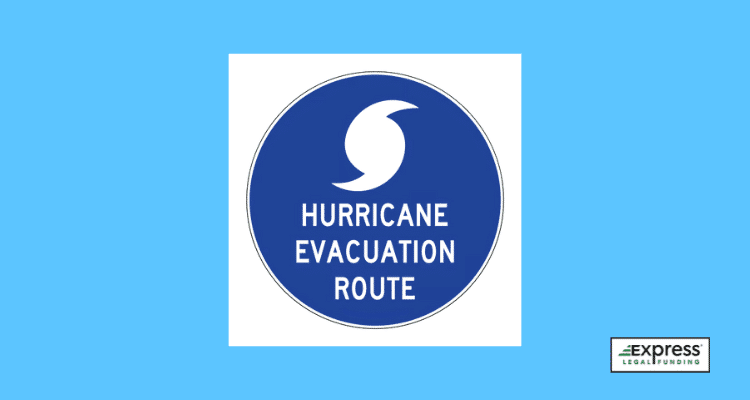
- Guides and directs people to safe evacuation routes during hurricane emergencies.
Advanced Services Sign
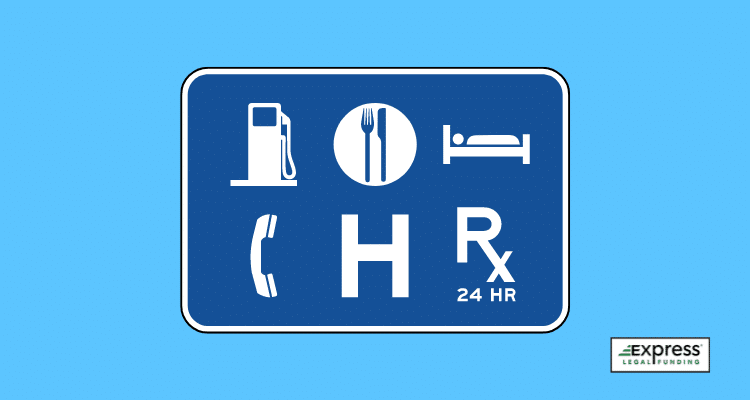
- Indicates services available in the area with symbols such as gas, food, a pharmacy, lodging, or a hospital.
Park and Ride Sign
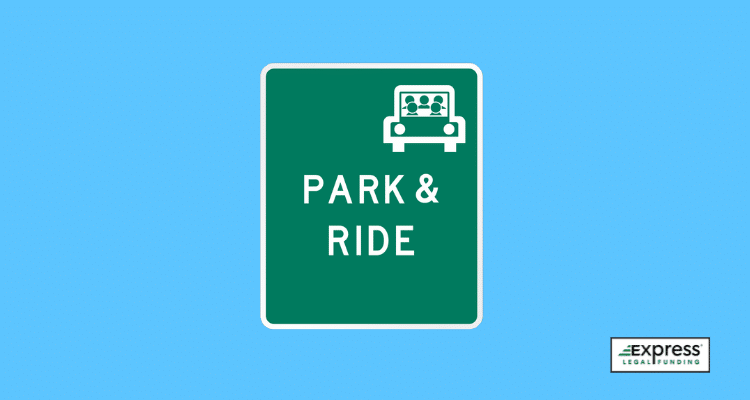
- Indicates designated facilities where drivers can park their cars and transfer to public transportation to complete their journey.
Street Name Sign
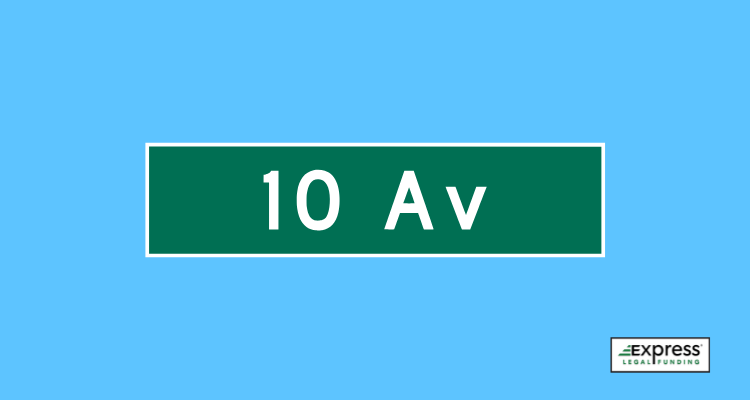
- Indicates the names of streets and roads to help navigate urban and rural areas.
Scenic Byway Sign
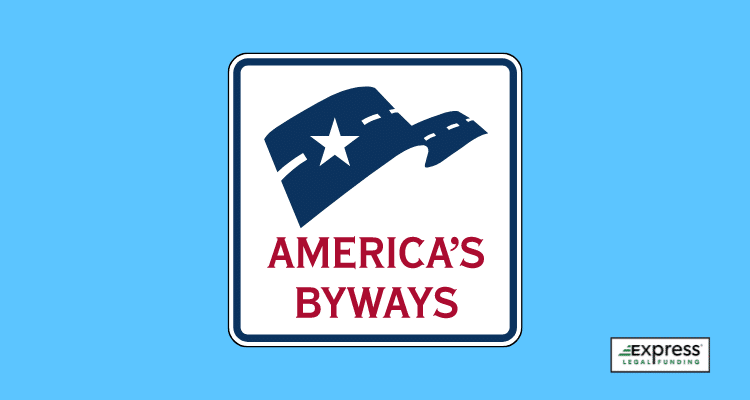
- Indicates highway routes that offer travelers picturesque views and access to cultural, historical, or natural attractions.
Exit Signs
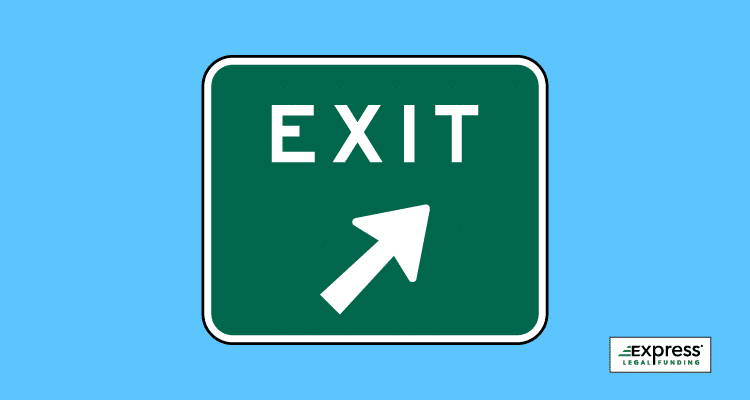
- Informs drivers about upcoming highway exits and the destinations accessible from those exits.
Mile Marker Sign

- Shows the mile number along a highway to help with navigation and emergency location reporting.
Toll Road Pass Only Sign
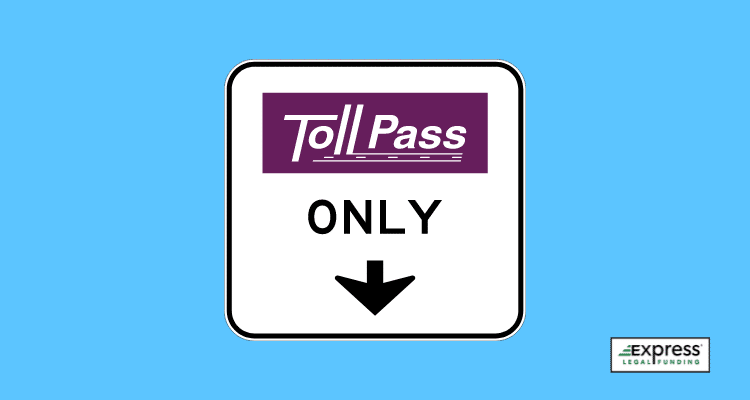
- Indicates that only vehicles with a valid toll road pass (used for electronic toll collection) are allowed to use the designated lane or route, excluding drivers who want to pay by cash via a toll booth.
Logo Service Sign
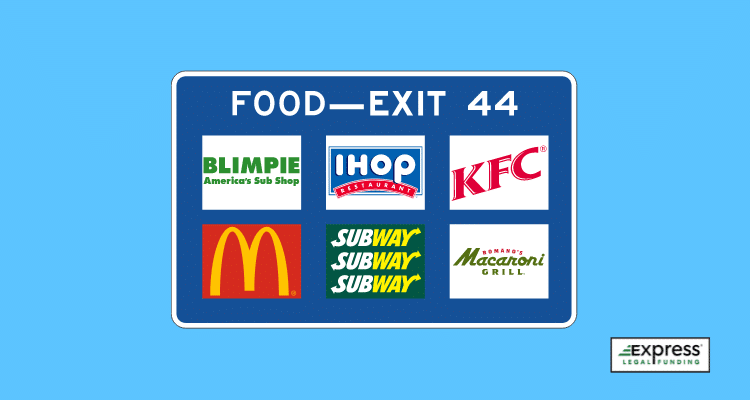
- These big blue signs are positioned prior to exits or interchanges on freeways and display logos of restaurants or lodging travelers can visit via the upcoming exit.
Advanced Trailblazer Sign Assemblies
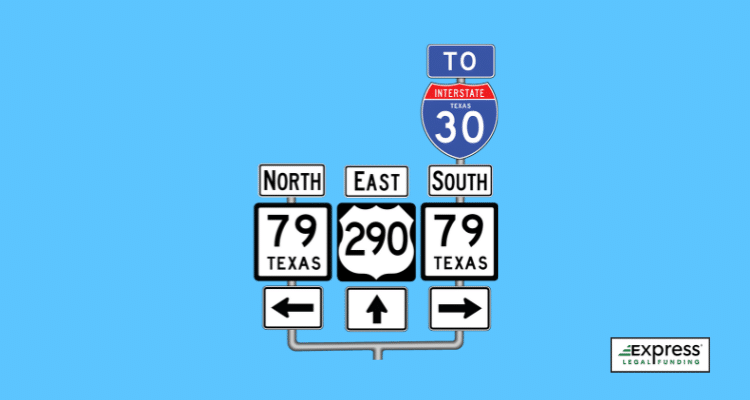
- Provide direction to specific destinations or routes through a series of signs, often used for detours and alongside tourist routes.
What are motorist service signs?
Motorist Service Signs
Motorist services signs have blue backgrounds and provide information about essential services available to drivers, such as gas stations, rest areas, and hospitals, often combined with highway exit signs.
Gas Symbol Sign
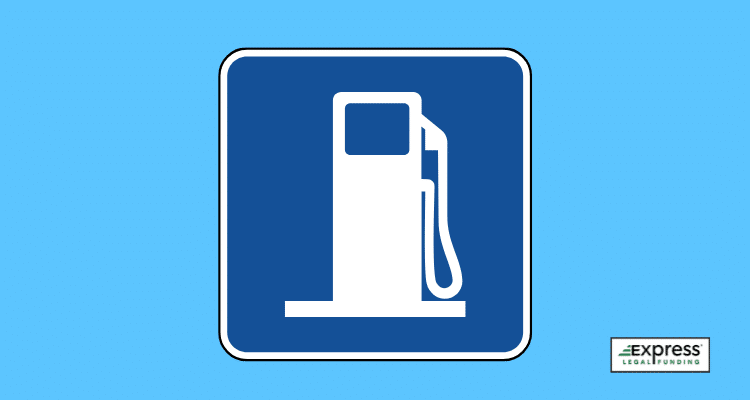
- Directs motorists to nearby gas stations for refueling their vehicles.
Food Symbol Sign
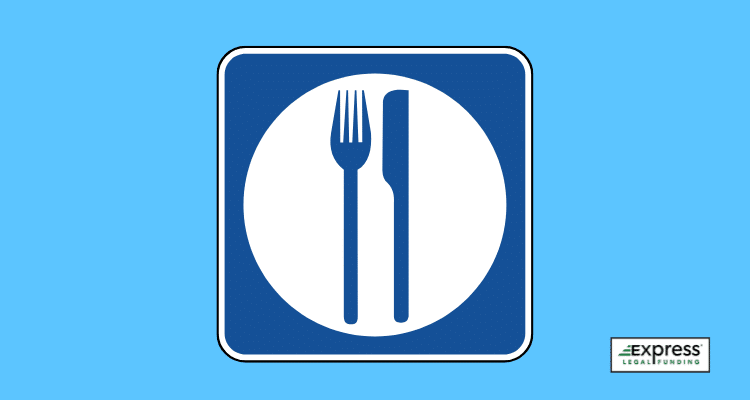
- Displays the location of nearby restaurants or fast food outlets where drivers can stop to eat.
Lodging Sign
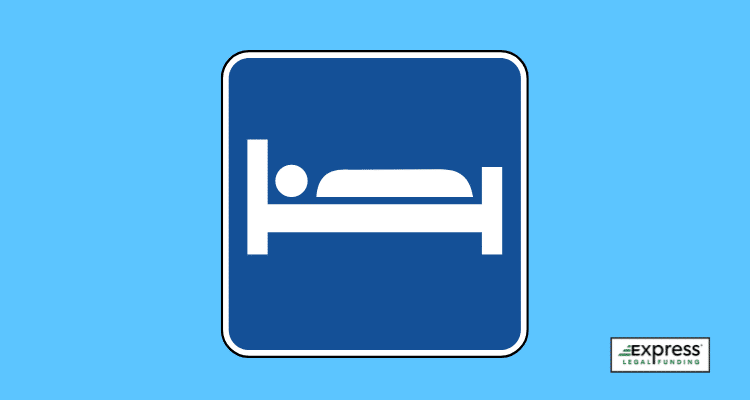
- Provides information about nearby hotels, motels, and other accommodations for overnight stays.
Hospital Symbol Sign
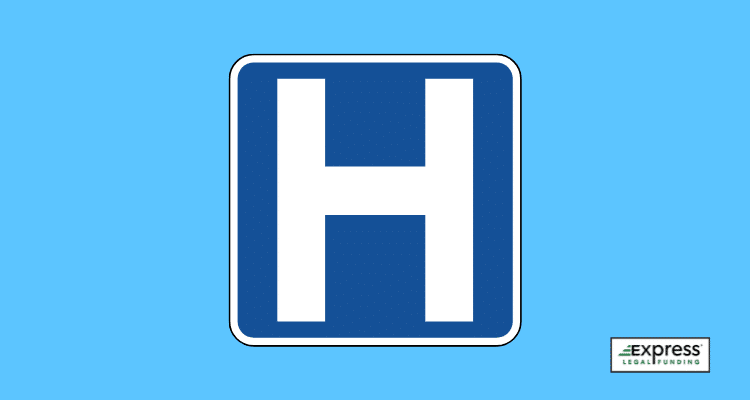
- Alerts drivers to the nearest hospital or emergency medical facilities.
Electric Vehicle Charging Sign
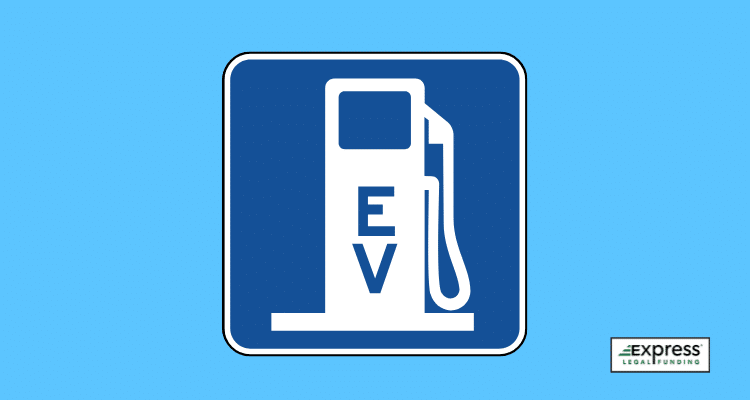
- Indicates the presence of electric vehicle charging stations for recharging electric vehicles.
Camping Sign

- Points out locations of campgrounds for motorists looking to camp in tents overnight.
Telephone Symbol Sign
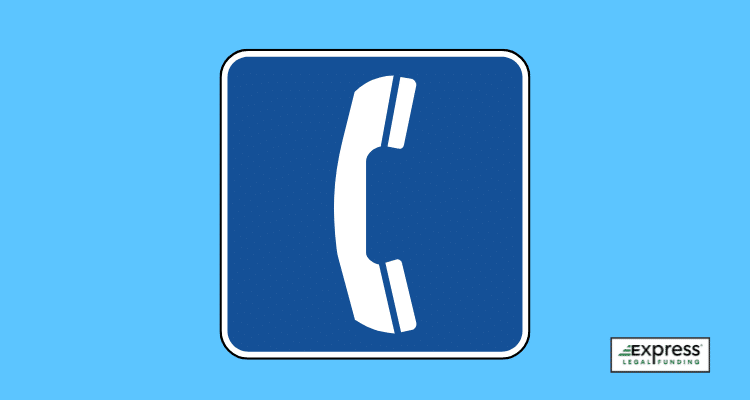
- Marks the location of public telephones for drivers who need to make a call.
Truck Parking Sign
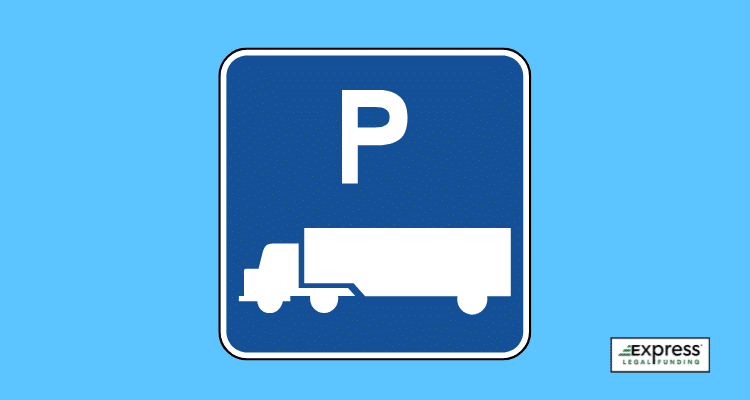
- Directs truck drivers to parking areas designated for trucks, such as 18-wheelers.
Wireless Internet Sign
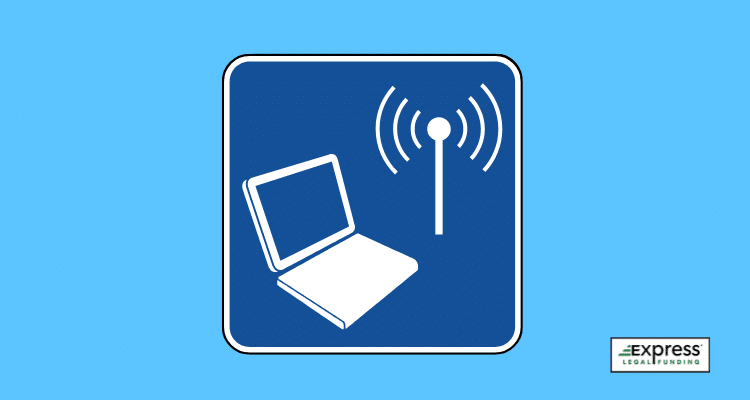
- Informs motorists of rest area locations offering free or paid Wi-Fi services.
What color are cultural and recreational road signs?
Recreational and Cultural Interest Area Road Signs
Recreational and cultural interest symbol signs have brown backgrounds and indicate the presence of recreational facilities like parks, campgrounds, and historical sites, guiding drivers to leisure activities.
Picnic Site Sign
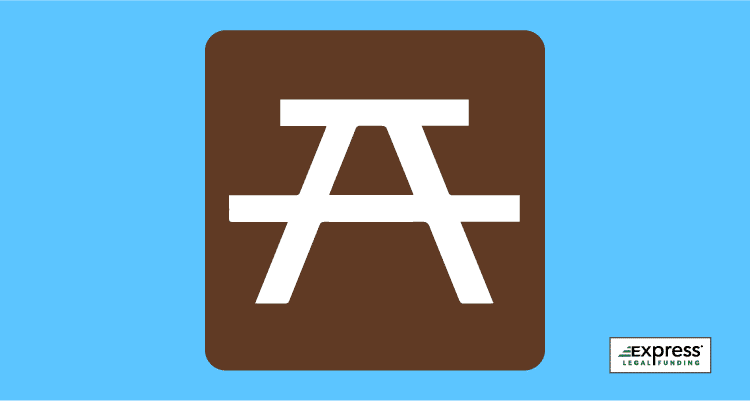
- Directs travelers to locations equipped with picnic tables and facilities for outdoor dining.
Hiking Trail Sign

- Indicates the starting point to one or more hiking trails nearby.
Fishing Area Sign

- Guides anglers to spots where fishing is permitted and often plentiful.
Boat Ramp Sign
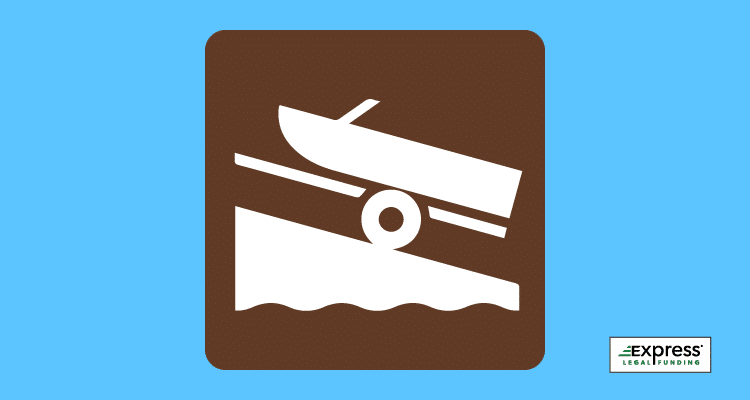
- Shows the locations where boats can be launched into water bodies such as lakes and rivers.
Wildlife Viewing Sign
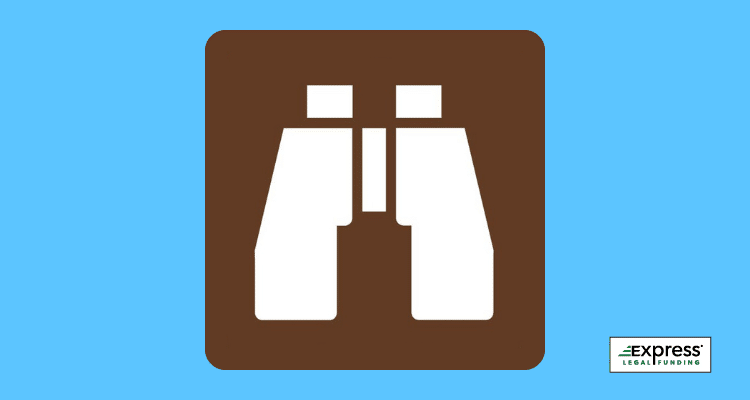
- Guides to areas where wildlife can be observed in their natural habitats.
Horseback Riding Trail Sign
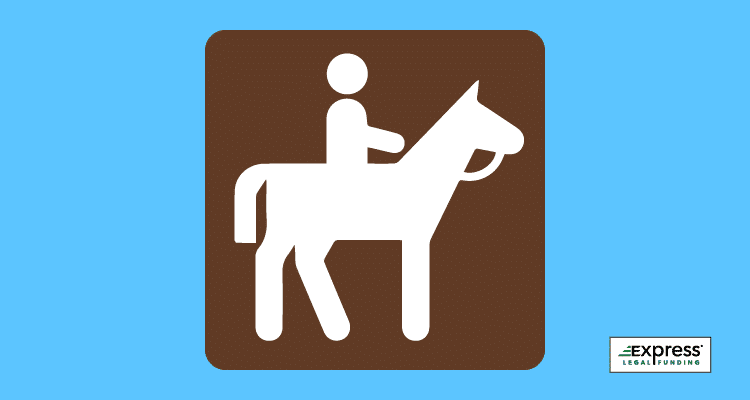
- Marks trails that are suitable for horseback riding, often in natural settings.
Ranger Station Sign
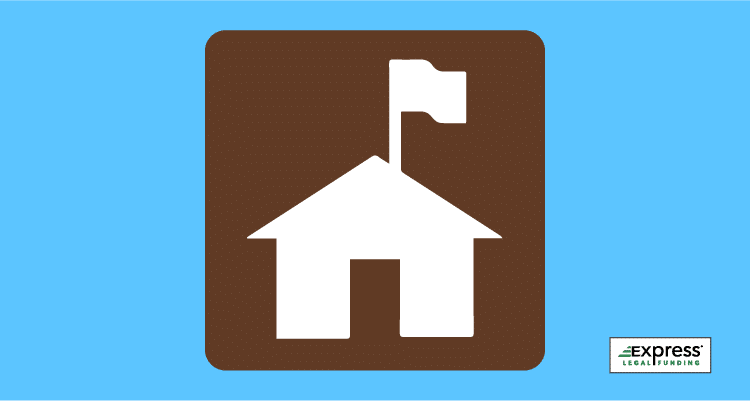
- Indicates the location of the nearest ranger station at national and state parks where visitors can get help from a park ranger.
Driving Tour Road Sign
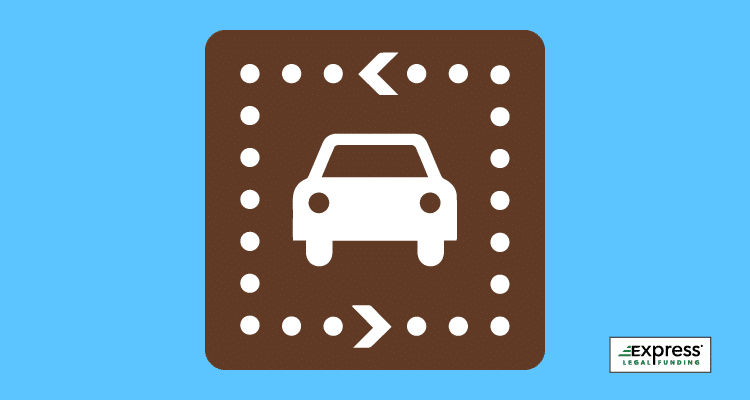
- Guides drivers to a designated scenic or historical route that can be toured via riding in a motor vehicle.
Mechanic Symbol Sign
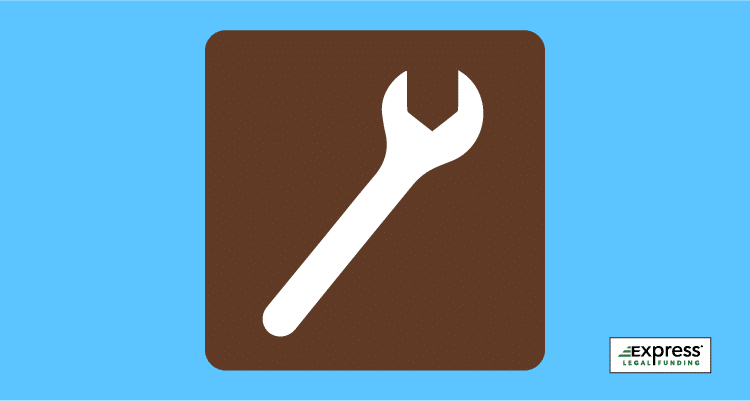
- Indicates to drivers the presence of a nearby mechanic service or vehicle repair facility.
Radiator Water Sign
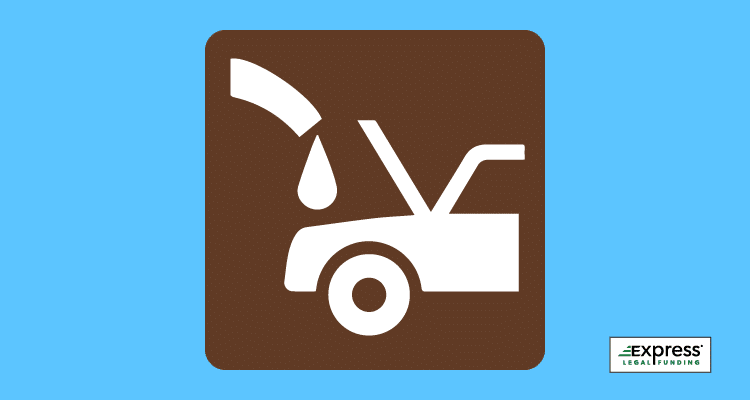
- Indicates a nearby location where drivers can refill their vehicle’s radiator with water to prevent overheating.
Rattlesnakes Symbol Sign
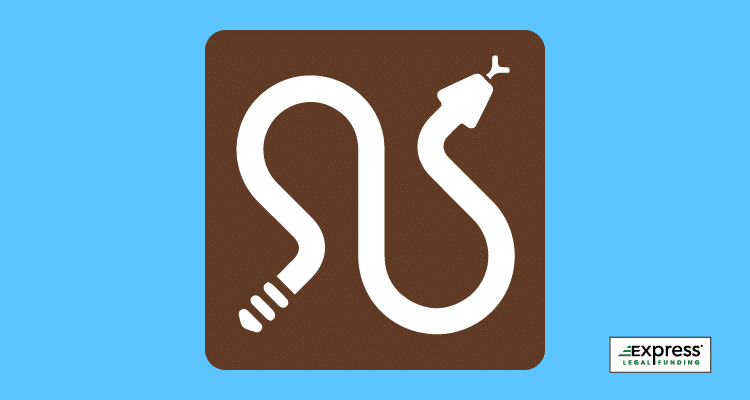
- Warns drivers and pedestrians of the potential presence of rattlesnakes in the area.
Temporary Traffic Control Signs and Barricades
Temporary traffic control signs are temporary signs used to manage traffic in construction zones, work areas, or temporary events, providing critical information and guidance to drivers and pedestrians.
What are the colors of temporary traffic control warning signs?
These signs have orange backgrounds, black borders, and black lettering. They help ensure safety, regulate traffic flow, and communicate changes in road conditions, lower speed limits, lane closures, and detours often due to roadwork.
Road Work Ahead Sign
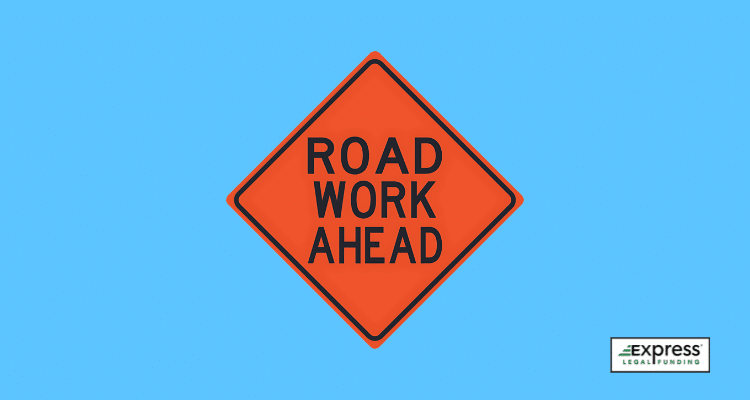
- Alerts drivers and pedestrians of ongoing construction or maintenance activities on the road.
Men Working Sign
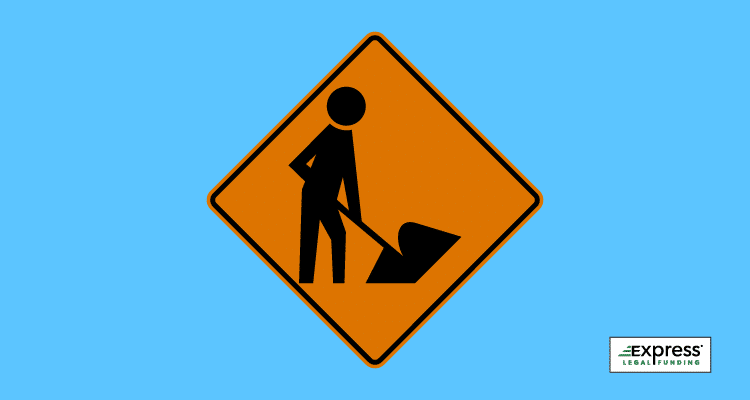
- Warns drivers that they are approaching an area with road workers along or on the roadway.
Utility Work Ahead Sign
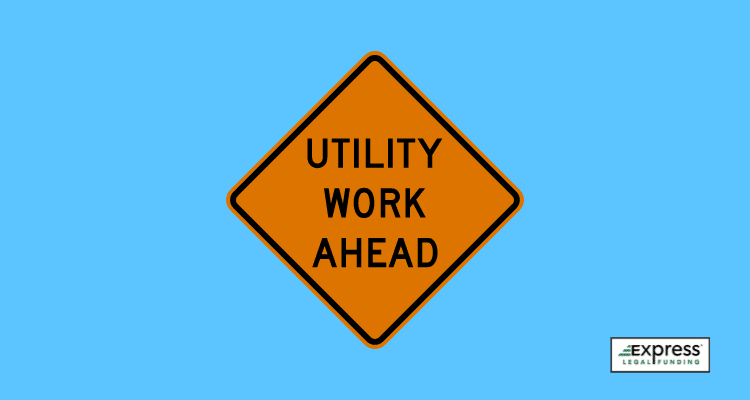
- Alerts drivers and pedestrians of upcoming utility work on or near the roadway.
Detour Sign

- Used to redirect vehicles onto an alternative route due to road closures or construction.
Road Work Next Five Miles Sign
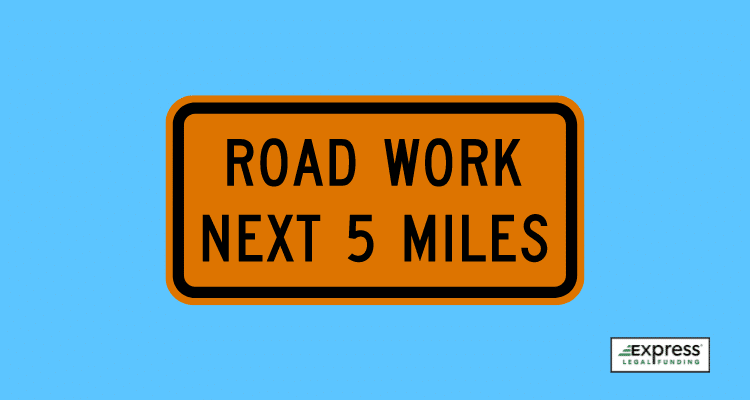
- Indicates that road construction or maintenance activities will be present for the next five miles of the road.
Slow Traffic Ahead Sign
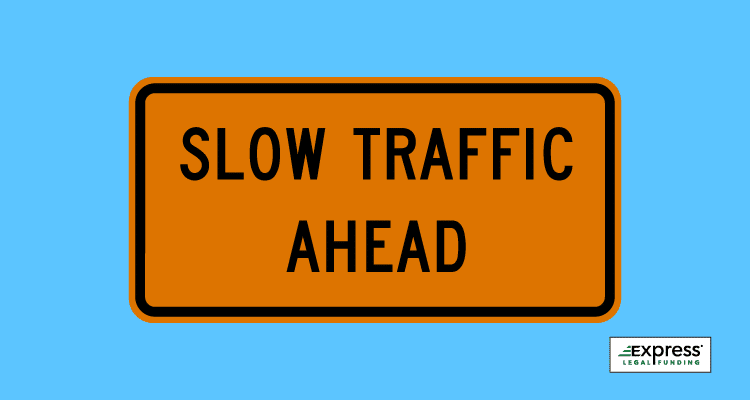
- Alerts drivers to an upcoming decrease in traffic speed or congestion on the road.
Right Shoulder Closed Sign
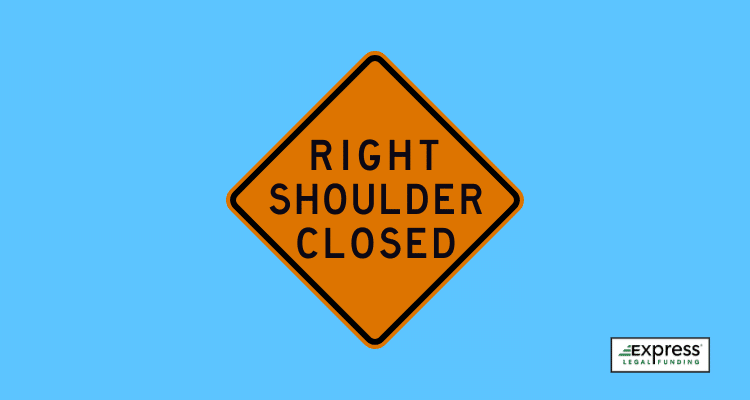
- Indicates the closure of the right shoulder on a road or highway where maintenance or construction work is being carried out.
Right Two Lanes Closed Sign
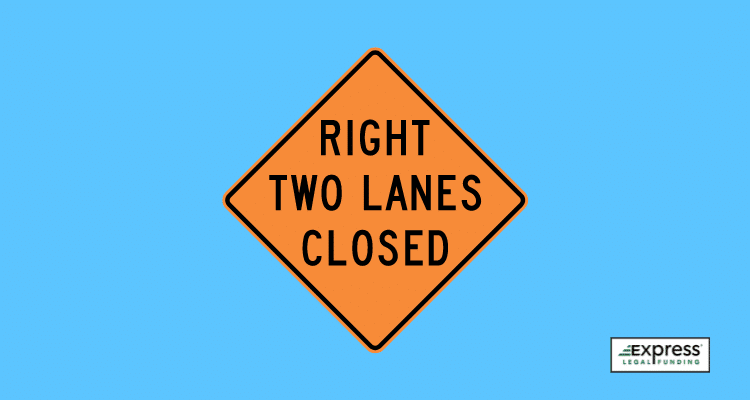
- Notifies drivers that the right two lanes of the road ahead are closed and that they should merge to the left lane.
Blasting Zone Sign
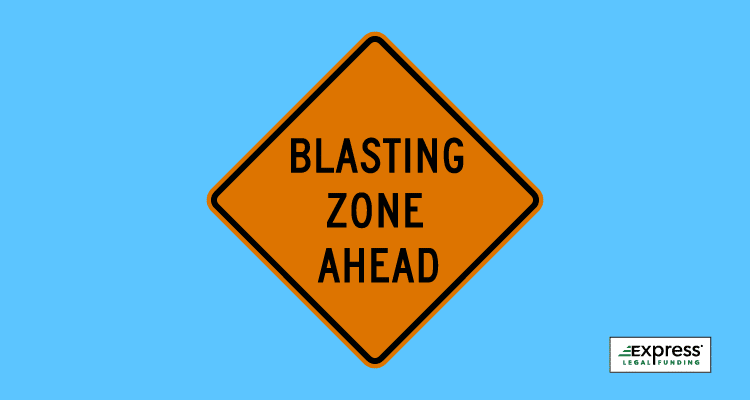
- Warns drivers and pedestrians ahead of areas where explosives are being used for construction or excavation purposes.
Exit Closed Sign
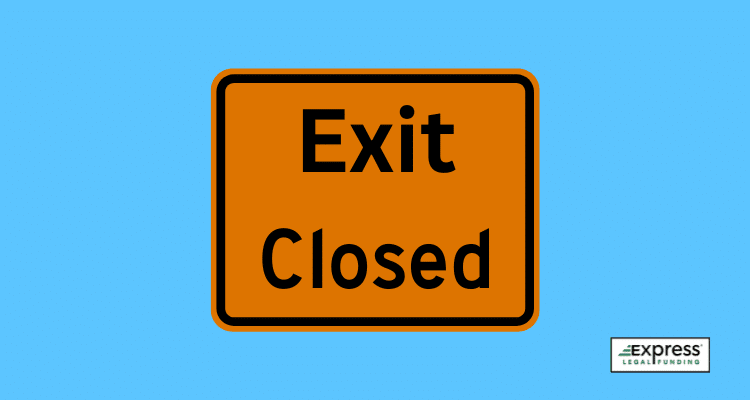
- Indicates that a street or highway exit is unavailable for use or is temporarily closed for safety or operational reasons, often related to ongoing construction work.
Flagger Ahead Sign

- Warns drivers that they are approaching a location where a flagger is controlling traffic around a work zone.
Road Closed Sign
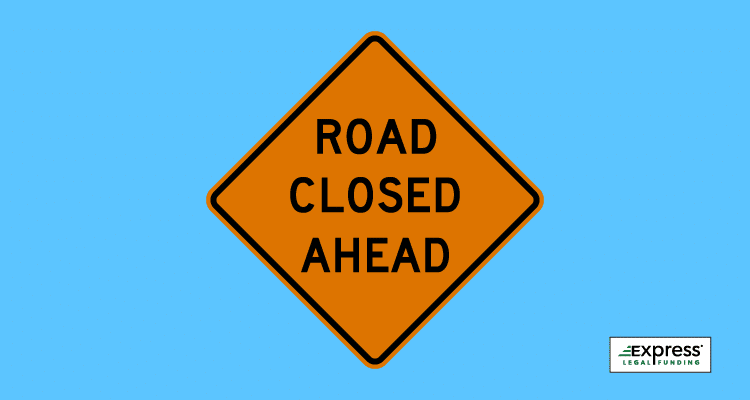
- Indicates that the road is closed to all traffic and is often used during construction or maintenance in tandem with type 3 barricades.
What is a type 1 barricade?
Type I Barricades

- Type 1 barricades are lightweight A-frame-shaped road folding barricades with one retroreflective panel consisting of orange and white angled stripes that indicate a close road or delineate traffic, especially around work areas.
What is a type 2 barricade?
Type II Barricades
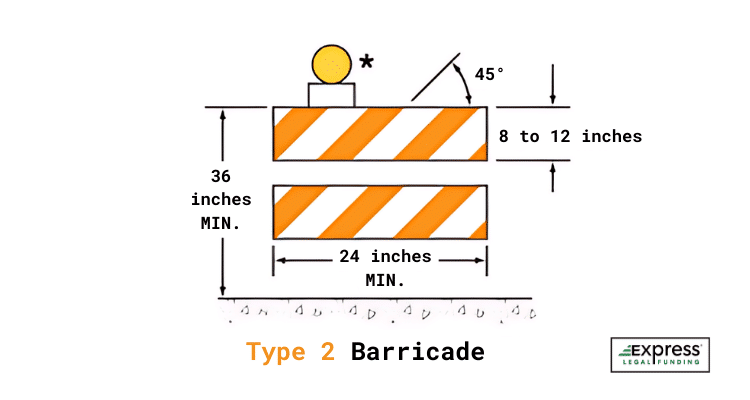
- Similar to type 1 barricades, type 2 are foldable A-frame-shaped barricades used to block off areas during construction or maintenance activities. The main difference is that type 2 consists of two retroreflective panels for enhanced visibility at night and on expressways.
What is a type 3 barricade?
Type III Barricade

- The largest of the three MUTCD barricade types with a minimum height of five feet, type 3 barricades are used for road construction, contain three retroreflective panels, and are often used to block off entire roadway entrances.
Traffic Barrels
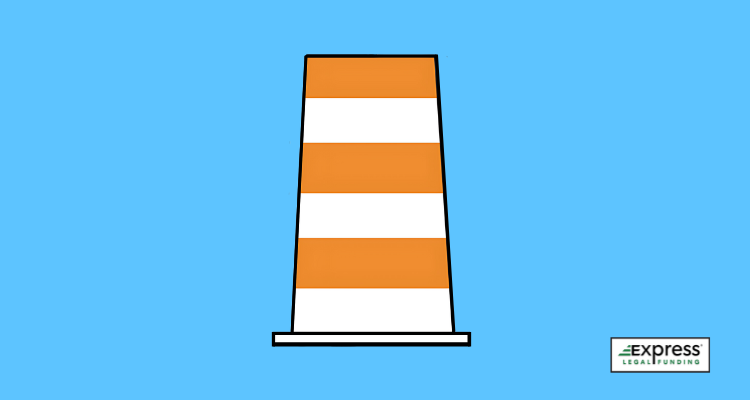
- Traffic barrels, also known as traffic drums, are barrel-shaped traffic markers with plastic construction and retroreflective features that assist with what is known as channelizing traffic and drivers through temporary work zones, lane closures, or detours. They are typically filled with sand or water to keep them in place.
Closing Summary About Road Signs in the United States
Understanding the different types of traffic signs in the US is crucial for ensuring road safety and smooth traffic flow.
These signs are designed to communicate important information quickly and effectively to drivers, helping to prevent accidents and guide drivers to their destinations.
Key Takeaways:
- Regulatory Signs: These signs provide instructions that road users must follow. Common examples include stop signs, yield signs, and speed limit signs.
- Warning Signs: These signs are typically yellow and warn drivers about potential hazards or changes in road conditions ahead, such as sharp turns, pedestrian crossings, or animal crossings.
- Guide Signs: These signs provide directional information to help drivers navigate roads and highways, including route markers, destination signs, and mileage indicators.
- Informational Signs: These signs offer general information, such as services available at upcoming exits, rest area locations, and points of interest.
- Temporary Traffic Control Signs: These signs are used to provide important information and guidance to drivers and pedestrians and manage traffic in construction zones, work areas, or temporary events.
Thank you for reading our comprehensive guide on traffic signs in the US. As always, we encourage our readers to drive safely and responsibly!
Road Sign Frequently Asked Questions (FAQ)
What are the most common types of road signs in the United States?
The most common types of road signs include regulatory signs (such as stop and yield signs), warning signs (like pedestrian crossing and curve ahead signs), and guide signs (which provide directions and distances).
Why is it important to understand road signs?
Understanding road signs is crucial for ensuring road safety, preventing accidents, and complying with traffic laws. It helps drivers make informed decisions and navigate roads efficiently.
How are road signs standardized in the US?
Road signs in the US are standardized by the Manual on Uniform Traffic Control Devices (MUTCD), which provides guidelines for the design, installation, and use of traffic control devices.
What do different shapes and colors of road signs indicate?
Different shapes and colors of road signs convey specific meanings. For example, red typically indicates prohibitive actions (like no turning), yellow is used for warnings, and green provides directional guidance.
What should I do if I encounter a road sign I don’t understand?
If you encounter a road sign you don’t understand; it’s best to proceed with caution and seek clarification from local traffic authorities or consult a reliable road sign guide.
A Little Bit About Who We Are and What We Do at Express Legal Funding
We are Express Legal Funding, a company that provides non-recourse pre-settlement funding to plaintiffs involved in personal injury and other types of civil lawsuits to help cover their living expenses and other costs during the litigation process.
Short on money during an ongoing lawsuit? Apply for legal funding anytime, 24/7.
Trusted Content Creators
To create expert content like this guide about legal and traffic law concepts, our authors perform extensive research and collaborate with legal professionals and industry experts.
At Express Legal Funding, we aim to provide more than affordable pre-settlement cash funding.
Through hard work and determination, we share free learning resources like this guide to help individuals better understand the complexities of legal issues.



